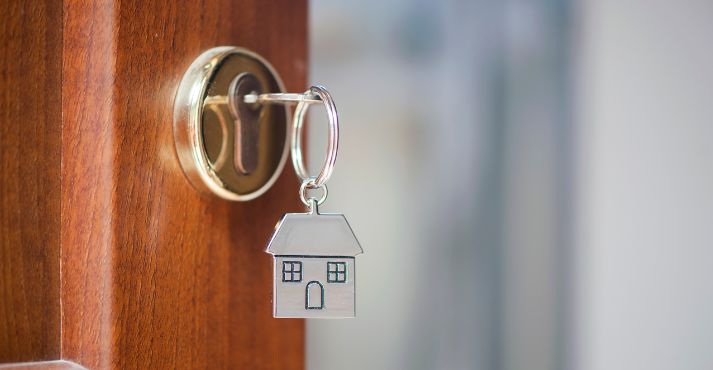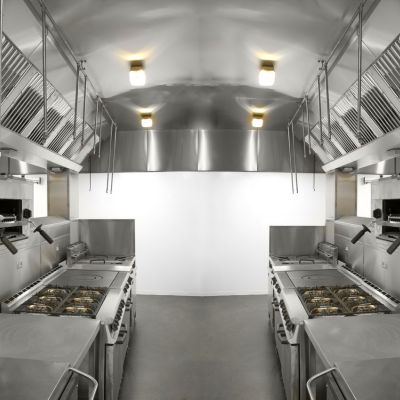Step into the world of dynamic pricing, where adaptability takes center stage. Dynamic pricing is more than just a strategy; it’s a responsive approach that holds significant importance in the ever-changing landscape of the hotel industry.
This overview will explore the meaning, relevance, and mechanisms that power this adaptive strategy, shedding light on the nuanced world of hotel revenue optimization.
In a world where change is the only constant, dynamic pricing emerges as a pivotal player in the hotel industry. It’s not just about setting a fixed rate; it’s about understanding the pulse of demand, recognizing patterns, and adjusting pricing in real time.
This adaptive pricing model enables hotels to stay agile, responding to market fluctuations and maximizing revenue potential.
As we uncover the details of dynamic pricing, we’ll explore why it’s essential for hotels and learn about the methods that make this flexible strategy work.
Understanding Dynamic Pricing in the Hotel Industry

Dynamic Pricing is a strategic approach within the hotel industry where the rates for hotel rooms are not static but adapts in response to various influencing factors.
This innovative strategy contrasts with traditional fixed pricing models, offering hotel establishments a dynamic way to optimize revenue.
Definition of Dynamic Pricing
Dynamic Pricing is a sophisticated pricing strategy employed by hotels, allowing room rates to Fluctuate based on a range of dynamic factors.
Unlike fixed pricing, which maintains static rates, dynamic pricing enables hotels to adjust their prices in real-time, responding to shifts in demand, seasonal variations, events, and broader market dynamics.
Rate Fluctuations
The core of dynamic pricing lies in its ability to introduce Rate Fluctuations. This dynamic approach acknowledges that the value of a hotel room is not constant but varies depending on different circumstances.
Rate fluctuations ensure the price aligns with the perceived value, providing flexibility to meet changing market conditions.
Factors Influencing Pricing
Several factors contribute to the Factors Influencing Pricing under dynamic pricing models. These include, but are not limited to, demand levels, seasonal variations, local events, and the overall market landscape.
Hotels can tailor their pricing to the ever-changing conditions by considering these dynamic elements.
Revenue Maximization
The ultimate goal of dynamic pricing is Revenue Maximization for hotel establishments.
By intelligently adjusting rates in response to demand peaks, seasonal trends, and market dynamics, hotels can capture the optimal value for their rooms.
This approach enhances revenue potential, ensuring a competitive edge in the market.
Fluctuating Rates in Hotels
The essence of dynamic pricing is captured in the concept of Fluctuating Rates in Hotels. This means that a guest’s price for a room may vary daily and even within the same day.
This adaptability allows hotels to capture the highest possible revenue while meeting the preferences and budgets of diverse guests.
Factors Affecting Hotel Prices
Understanding the Factors Affecting Hotel Prices is crucial for effective dynamic pricing implementation.
Hotels consider many elements, such as demand spikes during local events, seasonal travel patterns, competitor pricing, and weather-related trends. By incorporating these variables, hotels can fine-tune their pricing strategies.
Maximizing Revenue through Dynamic Pricing
Dynamic pricing serves as a powerful tool for Maximizing Revenue through Adaptive Pricing.
This approach acknowledges that the value of a hotel room is not fixed but can be optimized based on real-time data and market intelligence.
By dynamically adjusting prices, hotels can capture the highest possible revenue stream.
Factors Influencing Dynamic Pricing in Hotels
Dynamic pricing is a nuanced strategy shaped by various factors that respond to the ever-changing landscape of the hospitality industry.
Understanding these key elements is pivotal for hotel establishments aiming to optimize their revenue through adaptive hotel pricing strategies.
1. Demand Patterns
Demand Patterns play a central role in influencing dynamic pricing. Hotel rates can fluctuate based on the level of demand for accommodations.
High demand during peak seasons or special events often increases prices, while lower demand may prompt discounts to attract more bookings.
2. Time of Booking
The Time of Booking is a critical factor in dynamic pricing. Hotels may offer different rates based on how far in advance a guest makes a reservation.
Early bookings might come with discounts, while last-minute bookings or those during high-demand periods may incur higher rates.
3. Occupancy Rates

Hotel occupancy rates directly impact dynamic pricing strategies. Hotels monitor their occupancy levels closely and adjust prices accordingly.
High occupancy might lead to higher rates, while lower occupancy may prompt discounted offers to fill rooms and maintain revenue flow.
4. Special Events
Special events, whether local festivals, conferences, or major gatherings, significantly influence Dynamic Pricing. Hotels strategically adjust rates during these periods, leveraging the increased demand associated with such events.
5. Market Competition
Market Competition is a driving force behind dynamic pricing. Hotels are attuned to the rates offered by competitors in the exact location.
Competitive pricing strategies aim to attract guests while maintaining a balance that ensures optimal revenue for the hotel.
6. Dynamic Pricing Variables
Understanding Dynamic Pricing Variables is essential for hotels to navigate the complexity of adaptive pricing. These variables encompass internal and external factors that collectively shape the pricing landscape.
7. Booking Time Influence
The Influence of Booking Time on hotel rates is a nuanced aspect of dynamic pricing. Hotels may incentivize early bookings to secure reservations in advance or adjust rates dynamically as the booking date approaches.
8. Market Dynamics in Hotel Pricing
The broader Market Dynamics in Hotel Pricing encompass supply and demand, seasonal variations, and economic factors.
Hotels analyze these dynamics to fine-tune their pricing strategies, ensuring responsiveness to the market’s ebb and flow.
9. Influencers of Dynamic Pricing
In short, factors that impact Dynamic Pricing create a detailed pattern that helps hotels decide how to set their prices.
As demand patterns, booking times, occupancy rates, special events, and market competition interact, hotels can adapt their pricing dynamically, optimizing revenue and maintaining competitiveness in the vibrant hospitality landscape.
10. Booking Timing in Hotel Rates
Understanding the significance of Booking Timing in Hotel Rates allows hotels and guests to navigate the pricing landscape effectively.
Guests can take advantage of early booking discounts, while hotels can manage rates dynamically to achieve a balance between occupancy and revenue goals.
The Importance of Dynamic Pricing in Hotels

In the ever-evolving landscape of the hotel industry, the significance of dynamic pricing cannot be overstated.
This adaptive approach to setting room rates is pivotal in driving revenue, optimizing room utilization, and maintaining competitiveness in a dynamic market.
Why Dynamic Pricing Matters
Dynamic Pricing Matters because it allows hotels to navigate the fluctuating demands of the market with finesse. By continually adjusting room rates based on real-time factors, hotels can balance attracting guests and maximizing revenue.
Revenue Optimization in Hotels
The primary objective of Dynamic Pricing is Revenue Optimization. Hotels dynamically set rates to capture the maximum potential revenue from each booking.
This strategy ensures that room prices align with the current demand, allowing hotels to capitalize on peak periods and adjust rates during slower times.
Competitive Edge through Dynamic Pricing
Staying Competitive with Adaptive Pricing is another critical aspect. In a competitive market, hotels must offer rates that attract guests and outshine their rivals’ pricing strategies.
Dynamic pricing empowers hotels to remain agile, responding swiftly to changes in the competitive landscape.
Optimizing Room Availability
Dynamic pricing goes beyond revenue—it is about Optimizing Room Availability. Hotels can ensure their rooms are consistently occupied by tailoring rates to demand patterns. This optimization is crucial for achieving a healthy balance between occupancy levels and maintaining profitability.
Adapting to Changing Demand Patterns
The ability to Adapt to Changing Demand Patterns is where dynamic pricing truly shines. Hotels can respond to fluctuations in demand caused by seasonality, special events, or unforeseen circumstances.
This adaptability ensures that room rates remain in sync with the ebb and flow of market dynamics.
The Mechanics Behind Dynamic Pricing
Let’s explore the inner workings of dynamic pricing, revealing the strategies that make it an essential hotel tool. Instead of complex details or well-planned performances, it practically depends on data analysis, algorithms, and pricing software.
How Dynamic Pricing Works
Dynamic Pricing is all about flexibility. Hotels leverage Data Analytics to study market trends, customer behavior, and factors influencing demand. It’s not about deciphering complexities but understanding the rhythms of the market.
Analyzing Market Trends in Hotels
Picture having a tool that helps hotels understand the pulse of the market. Analyzing Market Trends uses algorithms and data analysis to anticipate shifts in demand, identify peak periods, and adjust prices accordingly.
Adaptive Pricing with Data Analytics
The magic lies in Adaptive Pricing. Data analytics empowers hotels to respond to changes swiftly. For instance, prices can increase during high-demand periods like holidays or events. Conversely, prices can be adjusted during quieter times to attract more bookings.
Predictive Analytics in Hotels
No crystal ball is needed. Hotels use Predictive Analytics by examining historical data and current trends to forecast future demand. It’s a bit like predicting the weather—only in this case, predicting the demand for hotel rooms.
The Role of Algorithms
Algorithms function as behind-the-scenes coordinators. They crunch numbers and make sense of vast amounts of data. These algorithms consider factors like occupancy rates, competitor pricing, and weather forecasts to determine the optimal pricing strategy.
Adapting Prices with Algorithmic Models
Dynamic pricing is all about being flexible in response to changing conditions. The use of Algorithmic Models ensures that pricing strategies are not static. Hotels can fine-tune prices for different customer segments, ensuring each guest gets a fair deal.
Real-Life Success Stories: How Dynamic Pricing Boosts Hotel Revenue
Look at real-world examples where hotels successfully used dynamic pricing to boost their revenue.
Example 1: Marriott International
Marriott International is an excellent example of how dynamic pricing can make a difference. By adjusting room rates based on occupancy, demand, and local events, Marriott increased revenue and improved overall profitability.
Example 2: Hilton Worldwide
Hilton Worldwide is another hotel group that benefited from adaptive pricing. By adjusting room prices strategically using data analytics, Hilton optimized revenue and stayed competitive in different markets.
Example 3: InterContinental Hotels Group (IHG)
IHG achieved revenue growth through dynamic pricing. Their strategy involves continuous monitoring of market trends, allowing them to make real-time adjustments. This approach not only increased revenue but also enhanced guest satisfaction.
Challenges in Dynamic Pricing
Dynamic pricing, while beneficial, comes with its set of challenges that hotels need to navigate effectively.
Customer Perception
One challenge is how customers perceive dynamic pricing. Guests may feel uneasy if they perceive rates are changing too frequently.
Hotels must communicate the value of this strategy, emphasizing that it allows for fair pricing based on real-time demand and other factors.
Potential Backlash
There’s a risk of backlash when customers discover different prices for the same room. Hotels should proactively address this by ensuring pricing decisions align with their overall customer service strategy.
Clear policies and proactive communication can mitigate potential issues.
Transparent Communication
The key to overcoming these challenges lies in transparent communication.
Hotels should communicate their dynamic pricing strategy clearly, educating customers on the benefits while being transparent about the factors influencing rate changes.
This openness helps build trust and understanding.
Conclusion
In wrapping up our look into dynamic pricing, it’s clear that this approach plays a vital role in managing hotel revenue.
It’s not just a tactic; it’s a cornerstone for hotels aiming to thrive in the ever-changing hospitality landscape.
Dynamic pricing is like a well-tuned instrument in the hotel’s toolkit, ensuring that pricing aligns with demand, striking a balance between filling rooms and maximizing profits.
As we’ve seen, it’s not just a trend; it’s a force shaping the future of how hotels manage their revenue.
Looking forward, we can anticipate even more advancements in dynamic pricing. The ongoing integration of technology, data analytics, and real-time insights will continue to shape how hotels set their prices.
As we close our discussion, it’s evident that dynamic pricing is here to stay, evolving with the times and proving a valuable strategy for hotel revenue management.








